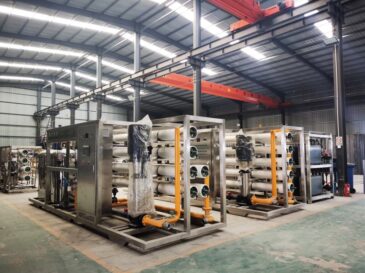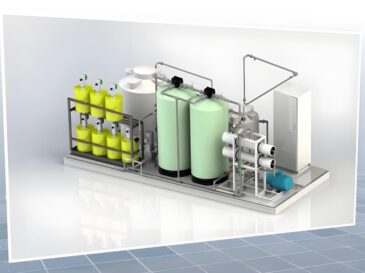Reverse Osmosis Membrane
Salt rejection rate:Up to 99.8%
Permeate flow:0.25m³/H--1m³/H
Recovery rate:35%–90%
Material:CA/PA
The full name of RO membrane is Reverse Osmosis Membrane, which is a core filter material used in water treatment. It is mainly used in water purifiers, seawater desalination, industrial pure water preparation and other fields. RO membrane uses reverse osmosis technology to force water to flow through an extremely fine semi-permeable membrane (pore size of about 0.1 nanometers) through high pressure, allowing only water molecules to pass through, while impurities such as dissolved salts, heavy metals, bacteria, viruses, and organic matter are intercepted, thereby achieving efficient purification.
1. Efficient desalination: Reverse osmosis membranes selectively intercept soluble salts (such as Na⁺, Cl⁻), colloids and macromolecular organic matter in water through their nanoscale pores (0.5-10 nm). The desalination rate generally exceeds 90%, and some composite membranes can reach more than 98%.
In seawater desalination, by applying pressure (higher than the osmotic pressure), water molecules are reversely permeated to the fresh water side, and salts are blocked on the concentrated water side to achieve fresh water production.
2. Deep water purification: It can remove bacteria, viruses (such as E. coli, norovirus), heavy metal ions (lead, mercury, arsenic) and organic pollutants (pesticide residues, chloroform), significantly improving the purity of water quality.
3. Energy-saving and environmental protection characteristics: Compared with traditional distillation, reverse osmosis technology consumes less energy and does not require chemical additives to avoid secondary pollution.
In industrial wastewater reuse, the recovery rate can be increased to 70%-90% through a multi-stage design, reducing water resource waste.
| Name | Key Metrics or Influencing Factors |
| Salt Rejection Rate | High-valency ions (Ca²⁺, Mg²⁺): >99%; Monovalent ions (Na⁺, Cl⁻): >98%; Organics (MW >100): >98% |
| Water Production | Affected by pressure, temperature, and fouling; typical range: 0.25T/H–1T/H (single branch membrane) |
| Recovery Rate | Typical range: 35%–90%; Too high a recovery rate can lead to fouling |
| Operating Pressure | General range: 0.5–6 MPa; maximum limit: ≤4.14 MPa (600 psi). |
| Operating Temperature | Standard range: 5–45°C; optimal range: 25–35°C. |
| Chemical Stability | Cellulose acetate membranes: high chlorine resistance; polyamide membranes: prone to oxidation (<0.1 ppm Cl tolerance). |
| Heat Resistance | Long-term use <45°C; high temperatures accelerate aging. |
| pH Range | Most membranes: pH 3–10; cellulose acetate: optimal pH 5–6. |
| Membrane Surface Properties | High hydrophilicity reduces organic adsorption; smooth surfaces lower fouling risk. |
| Compaction Resistance | Robust support layers reduce flux decline caused by compaction. |

capacity:0.5-100ton/h
treat process:Pretreatment + reverse osmosis
materials:stainless steel/Fiberglass
Brand:zhong yi brand

capacity:1-10000ton/day
water source:Mainly seawater source
water usage:domestic water
function:solve the problems of fresh water resources